BLUE
- About
- Seasons
- LA BOHÈME
- FELLOW TRAVELERS
- CURLEW RIVER
- TIME TO ACT
- FALSTAFF
- Past Seasons
- TOSCA
- CAVALLERIA RUSTICANA/ PAGLIACCI
- ARMIDA
- MADAMA BUTTERFLY
- WOMAN WITH EYES CLOSED
- THE BARBER OF SEVILLE
- THE FLYING DUTCHMAN
- IPHIGÉNIE EN TAURIDE
- PROVING UP
- LA TRAVIATA
- THE PASSION OF MARY CARDWELL DAWSON
- RUSALKA
- THE MARRIAGE OF FIGARO
- ARIODANTE
- IL TROVATORE
- DENIS & KATYA
- WE SHALL NOT BE MOVED
- THE MAGIC FLUTE
- THE ROSE ELF
- IN A GROVE
- CARMEN
- BLUE
- Free & Low Cost Events
- Special Events
- Tickets
- Support
- Education
- Resident Artists
- Our Team
- Facilities
- Current Media Releases
- Pittsburgh Opera presents romance, broken hearts, free concerts, disco, and more this fall
- Pittsburgh Opera is proud to announce its stellar class of 2025-26 Resident Artists
- Pittsburgh Opera to host 18th Annual Piano Sale August 21st-24th
- Christopher Hahn to retire after 2025-26 Season
- Pittsburgh Opera announces its 87th season
- Pittsburgh Opera presents Haydn’s 'Armida' Jan. 25–Feb.2, 2025
- Pittsburgh Opera presents drama, intrigue, murder and more this fall
- Pittsburgh Opera announces its 2024-25 Resident Artists
- Music Director Antony Walker receives 5-year contract extension
- Pittsburgh Opera to offer free childcare during La Traviata matinee
- Pittsburgh Opera announces first of its kind rideshare voucher program
- Emily Richter a Grand Finals Winner of Metropolitan Opera’s Laffont Competition
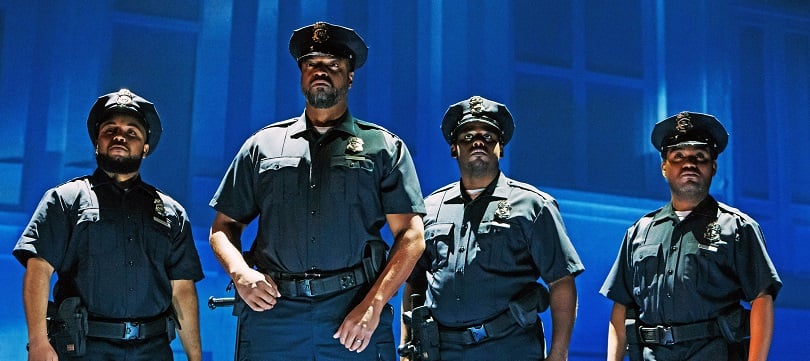
BLUE
Music by Jeanine Tesori, libretto by Tazewell Thompson • Apr. 23, 26, 28, 29 & May 1, 2022
Reflective of an all-too-familiar American headline, Blue centers on the hopes and fears of a young Black couple as they raise their son.
As the boy grows into a young man, he becomes a student artist and activist. His mother worries for his future, while his father tries to prepare him for the harsh realities of 21st-century America. The father also wrestles with his own identity as a police officer, a "Black man in blue", and the friction that causes within the family.
When their deepest fears come true, the grieving parents must navigate the turbulent waters of loss at the hands of police, while seeking answers and support from their church and community.
Tony Award®–winning composer Jeanine Tesori and NAACP Theatre Award–winning librettist Tazewell Thompson’s new opera is inspired by contemporary events and Black literature. Exploring race, violence, and reconciliation, Blue places timely issues at the forefront of modern opera and invites audiences to the emotional epicenter of their impact.
Glenn Lewis conducts. Tazewell Thompson directs, with Cindy C. Oxberry as Associate Director.
Blue was commissioned by The Glimmerglass Festival and premiered in July, 2019.
The scenery and costumes were originally created for a co-production with The Glimmerglass Festival, Washington National Opera, and Lyric Opera of Chicago.
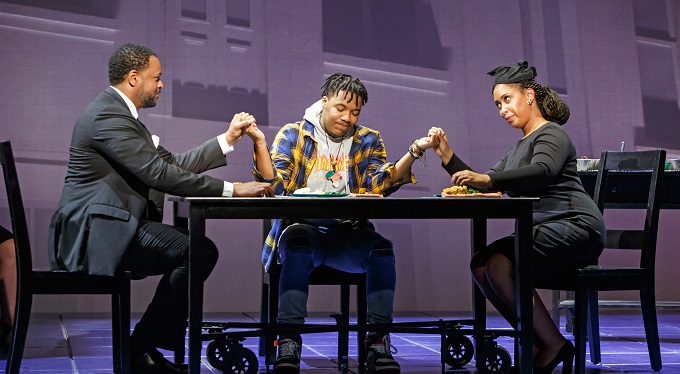
Family dinner - The Father (Kenneth Kellogg), The Son (Aaron Crouch), and The Mother (Briana Elyse Hunter) (photo credit: David Bachman)
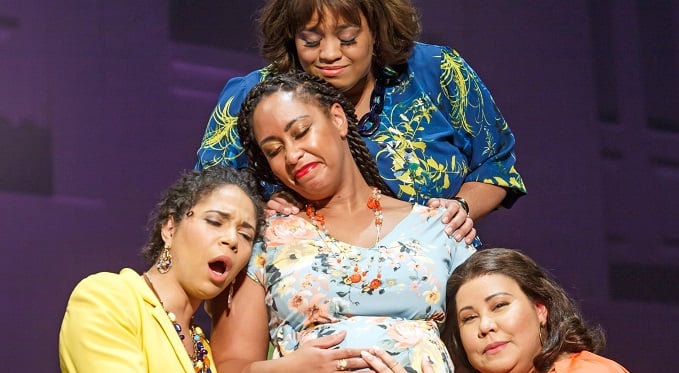
The Mother (Briana Elyse Hunter) is visited by her girlfriends (Amanda Lynn Bottoms, Ariana Wehr, and Adrianna Cleveland) during her pregnancy (photo credit: David Bachman)
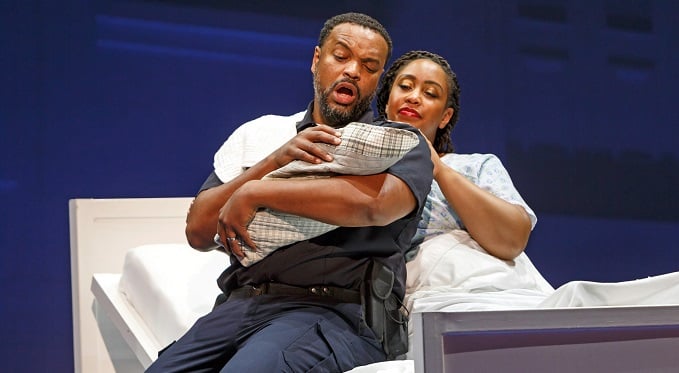
The Father (Kenneth Kellogg) and The Mother (Briana Elyse Hunter) with their newborn baby boy(photo credit: David Bachman)
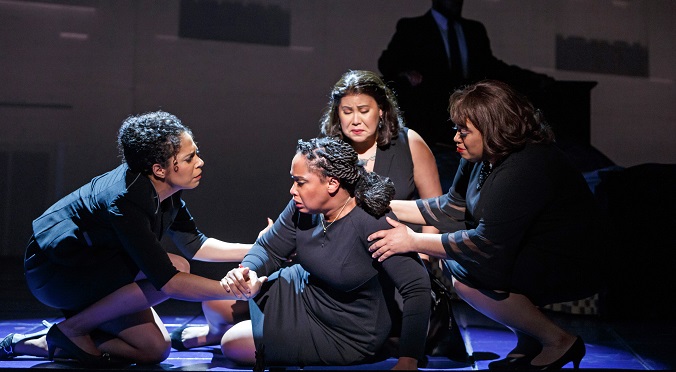
The Mother (Briana Elyse Hunter) is comforted by her girlfriends (Amanda Lynn Bottoms, Ariana Wehr, and Adrianna Cleveland)(photo credit: David Bachman)
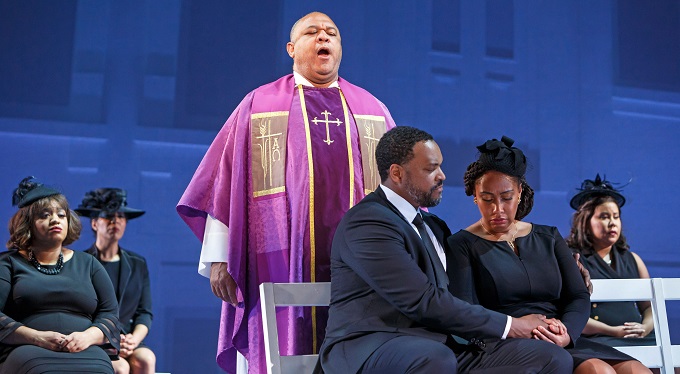
The Reverend (Gordon Hawkins) comforts the grieving parents (Kenneth Kellogg and Briana Elyse Hunter)(photo credit: David Bachman)





CAST AND ARTISTIC TEAM


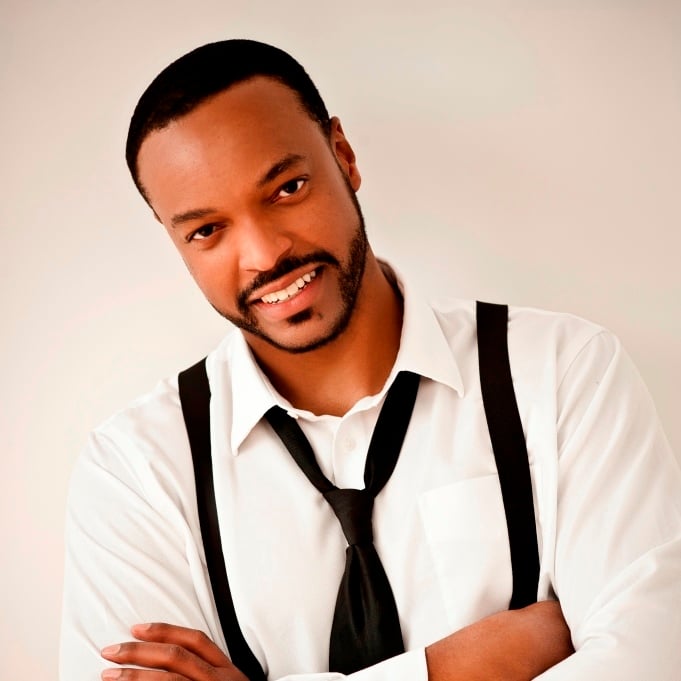
Kenneth Kellogg: The Father

Briana Elyse Hunter+: The Mother

Aaron Crouch: The Son

Andrew Turner*: Policeman/Buddy #1
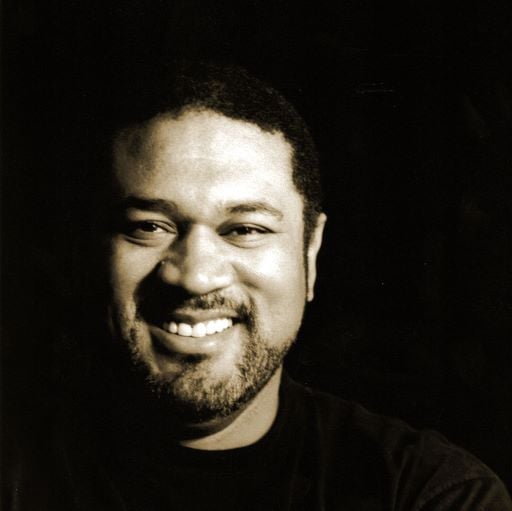
Gordon Hawkins+: The Reverend

Yazid Gray*: Policeman/Buddy #3

Adrianna Cleveland: Girlfriend #2
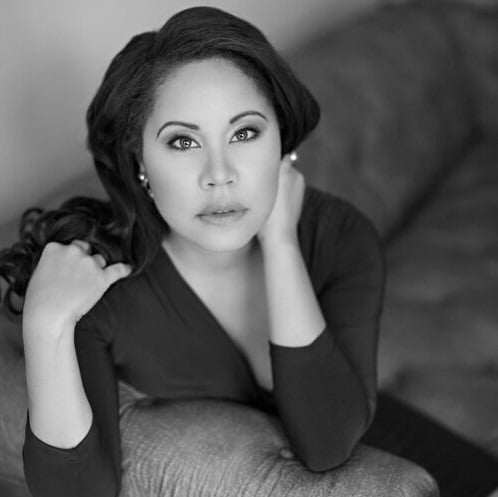
Ariana Wehr+: Girlfriend #1 / Nurse
.png)
Amanda Lynn Bottoms+: Girlfriend #3
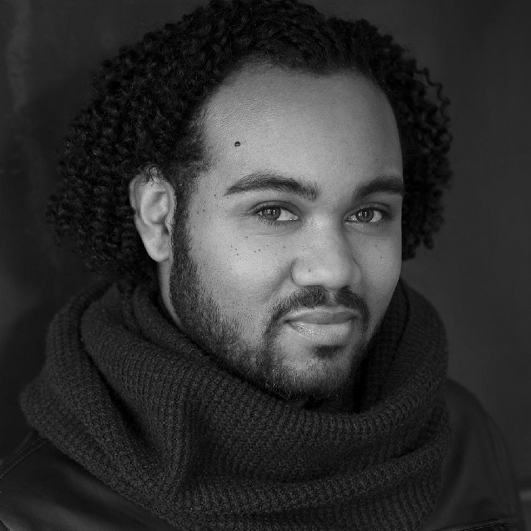
Ernest C. Jackson+: Policeman/Buddy #2
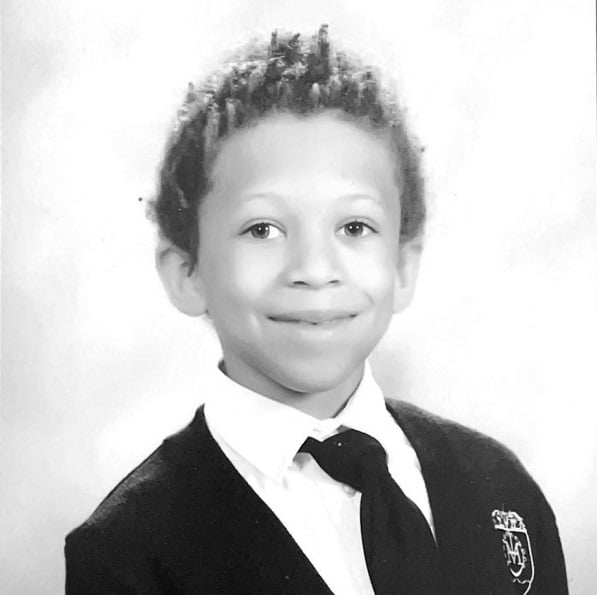
Jackson Walton+: Young Son (April 26)
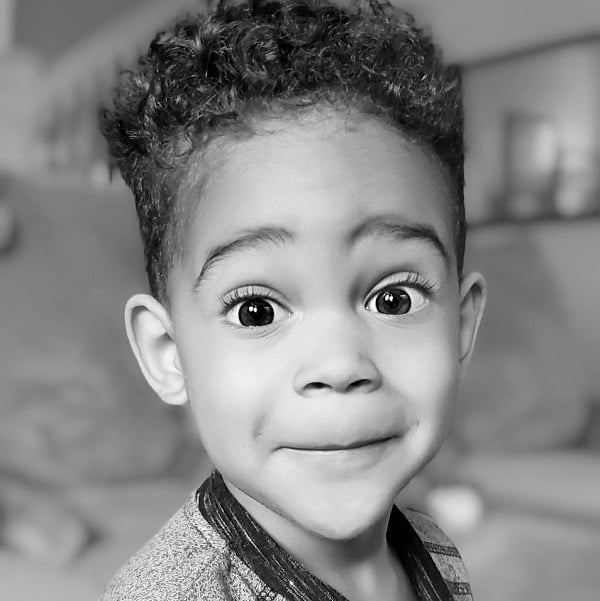
Roman Williams+: Young Son
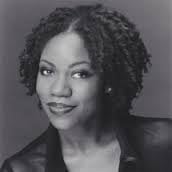
Kimwana Doner-Chandler: Girlfriend 1/Nurse (4/28, 4/29, 5/1)
Conductor: Glenn Lewis
Stage Director: Tazewell Thompson+
Associate Director: Cindy C. Oxberry+
Assistant Stage Director: Kaley Karis Smith*
Scenery Designer: Donald Eastman
Costume Designer: Jessica Jahn
Wig and Make-up Designer: Izear Winfrey
Lighting Designer: Eric Norbury
Asst Lighting Designer: Todd Nonn
Stage Manager: Cindy Knight
Asst Stage Manager- Phil Gold
Asst Stage Manager- Hannah Nathan
Director of Musical Studies: Mark Trawka
Associate Coach/Pianist: James Lesniak
+ Pittsburgh Opera debut
* Pittsburgh Opera Resident Artist
** Pittsburgh Opera Resident Artist alumni
PREVIEWS AND REVIEWS


- Review - onStage Pittsburgh - Riveting Social Justice Opera Packs a Wallop
- Review - Pittsburgh Post-Gazette - Review: Blue
- Broadway World - Photos: First Look at BLUE at Pittsburgh Opera
- Entertainment Central Pittsburgh - April Theater Guide
- Beaver County Times - April fun in the Beaver Valley, Pittsburgh & beyond
- The Saturday Light Brigade - Neighborhood Voices - Interview: Pittsburgh Opera: Blue, Tazewell Thompson & Rebekah Diaz
- Pittsburgh City Paper - The top events in Pittsburgh for April 21-27
- WQED-FM Voice of the Arts podcast interviews
- Glenn Lewis Conductor
- Kenneth Kellogg The Father
- Briana Elyse Hunter The Mother
- Tazewell Thompson Librettist/Stage Director
- Trib Live - Pittsburgh Opera's 'Blue' explore themes of race, violence and reconciliation
- CBS Pittsburgh - Pittsburgh Today Live - Weekend Guide
- onStage Pittsburgh - Pittsburgh Opera Presents Local Premiere of “Blue”
- NEXTpittsburgh - What to do this week in Pittsburgh
- Pittsburgh Magazine - Things To Do This Weekend in Pittsburgh
DETAILS & RESOURCES


Music by Jeanine Tesori, libretto by Tazewell Thompson
Sung in English with English texts projected above the stage
Four performances at the August Wilson African American Cultural Center. These will be the first performances by Pittsburgh Opera
We want you to have the best experience possible at our performances!
Here are some details and resources to help. Also visit our Opera FAQs or our Accessibility page.
- Run time: 2hrs 30min including one intermission
- Understand Every Word: Blue is sung in English, and has English supertitles projected above the stage at all performances
- Download the Program Book
- Download the study guide
- Parking Downtown: get real-time parking availability
- Pre-Opera Talks
- Audio Description
- Braille Programs
- Large-Print Programs
August Wilson African American Cultural Center Seating Chart
Click here to view a detailed seating chart (PDF) for the August Wilson African American Cultural Center.
CHILD POLICY:
- Children must be ages 6 and up. Suggestions and tips for bringing children to the opera may be found at pittsburghopera.org/FAQ.
- All children must have a ticket. There is a 50% discount for kids and teens ages 6-18.
- Please note that per the AWAACC's COVID protocols, proof of vaccination is required for all patrons including children; that masks are mandatory, and that "the only approved masks are N95 & kN95 masks. Individuals who cannot wear a mask are asked not to visit at this time." See the AWAACC's COVID protocols webpage for full details.
SYNOPSIS (CONTAINS SPOILERS)


Synopsis - warning, contains spoilers
The Mother calls her Girlfriends together to her apartment in Harlem to tell them she is expecting a child. Their joy turns to concern when she tells them she is carrying a boy; they warn her that her son will not be welcomed in this country. When her hope and love – for the child she carries and for The Father, a policeman – will not be shaken, her Girlfriends relent, blessing her and the child. The Father’s police officer buddies, on the other hand, are immediately joyful – and a bit jealous – when they learn their fellow officer has fathered a son.
Sixteen years later, The Son, a student artist and activist, frequently finds himself at odds with the law for his involvement with non-violent political protests. The Father confronts The Son, who pushes back, accusing his police officer Father of upholding an oppressive system. Despite The Son’s bitter words, The Father tells him he will always love him and hold him close.
After The Son is shot by a police officer at a protest, the heartbroken Father meets with The Reverend, who attempts to comfort him and encourages him to forgive. The Father, adopting the attitude of The Son, lashes out angrily. As the funeral for The Son approaches, The Girlfriends return to Harlem to support the grief-stricken Mother as she prepares to lay her son to rest.
At the funeral, Father and Mother pray with the congregation, asking God to welcome their son to Heaven. The Father briefly becomes lost in a fog of emotion, guilt, regret and memory, then finds his way back to the community gathered around him in church.
In an epilogue, we see The Father, The Mother and The Son, together, in a bittersweet moment around a kitchen table, sharing a meal, as The Son reconciles with his father and announces his plans for further artistic studies and one more peaceful protest.
- from the Glimmerglass Festival
FURTHER READING


These materials were compiled by the Glimmerglass Festival
Online Resources
Campaign Zero advocates for policies – informed by data, research and human rights principles – to change the way police serve communities.
Race Forward brings systemic analysis and an innovative approach to complex race issues to help people take effective action toward racial equity. Race Forward offers online resources as well as in-person trainings.
The United Nations offers a variety of resources for combatting racism.
The Center for Popular Democracy and Policy Link, two nonprofit advocacy organizations, partnered with various protesters and street-level organizers to identify concrete steps toward promoting justice and equity in law enforcement. Highlights from their report were published by mic.com as “15 Things Your City Can Do Right Now to End Police Brutality.”
Articles and Essays to Read Online
Letter to My Son First published in The Atlantic, this adapted excerpt from Ta-Nehisi Coates’ book Between the World and Me finds him explaining the construction of race and its inseparable ties with the idea of an American national identity. Interweaving history with personal anecdotes, Coates’ moving letter depicts the institutionalized racism that both forms and punishes black bodies, instilling a fear that governs black lives.
Letter from a Region in My Mind Writing for The New Yorker in 1962, James Baldwin recounts his life through navigating various faiths; in the process, he elucidates the religious underpinnings behind constructions of race in America and worldwide.
The Long History of Black Officers Reforming Policing From Within Part of The Atlantic’s project “The Presence of Justice,” Taylor Hosking’s contribution documents the ongoing project of minimizing racial bias in police operations from the Reconstruction Era to today. As Hosking illustrates, not only are minority civilians consistently targeted and punished to greater extents than their White peers, but black officers continue to face racism both in the field and internally within their departments.
Police Officers Tell of Strains Of Living as a “Black in Blue” Lena Williams’ 1988 report for the New York Times profiles black officers who feel a tension between their jobs and their racial identity. These officers express how this tension affects their job performance, their perception of their communities and how white officers perceive them.
How to raise a black son in America In his brief TED Talk, poet Clint Smith remembers a night from his boyhood when he played with water guns in an empty parking lot with his white friends. He paints the scene of his father’s furious and fearful response.
Why America’s Black Mothers and Babies Are in a Life-or-Death Crisis In 2018, “Black infants in America [were] now more than twice as likely to die as white infants,” and “Black women [were] three to four times as likely to die from pregnancy-related causes as their white counterparts.” Full of statistics and first-hand accounts, Linda Villarosa’s article for the New York Times claims that systemic racism causes adverse health effects in black women that can jeopardize pregnancy, and that racial bias and inequalities in health care put black mothers and black babies at risk.
America’s Unfair Rules of the Road Corinne Ramey at Slate gives detailed accounts of how public transportation in many U.S. cities fails to provide quality access and service to neighborhoods of racial minorities and low income. Not only do recent transportation projects devalue and destroy minority neighborhoods, they also negatively impact the health and wellness of communities of color.
Spike Lee on Gentrification When an audience member at the Pratt Institute in New York asks film director Spike Lee to consider the positive impacts of gentrification, Lee fires back with stories from his own lived experience to evidence the real harm faced by displaced black communities in Brooklyn.
The Long, Painful History of Police Brutality in the U.S. Digging through the archives of the Smithsonian National Museum of African American History and Culture, Katie Nodjimbadem finds that today’s concerns over police brutality date back to decades before the Civil Rights movement of the 1960s.
Policing the Police: A Civil Rights Story Historian Sarah Brady Siff at the online journal Origins details how the problem of “policing the police” stretches back decades and is rooted in the structure of American politics itself. U.S. federalism has created a tension between rights guaranteed by the Constitution and police authority that resides at the state and local levels, and sorting out those tensions remains an unfinished part of the civil rights movement.
Books for Further Exploration:
Between the World and Me (Ta-Nehisi Coates) pivots from the biggest questions about American history and ideals to the most intimate concerns of a father for his son, offering a powerful new framework for understanding our nation’s history and current crisis.
The Fire This Time: A New Generation Speaks About Race (edited by Jesmyn Ward) gathers some of today’s most original thinkers and writers in response to James Baldwin’s 1962 classic, The Fire Next Time. The collection is divided into three parts that shine a light on the darkest corners of our history, wrestle with our current predicament, and envision a better future.
Savage Inequalities: Children in America’s Schools (Jonathan Kozal) reports on the author’s two-year tour of U.S. public schools, which revealed extreme divide in the quality of resources, facilities and staffing between the country’s richest and poorest schools, challenging the belief that our country provides all children with equal opportunities.
White Like Me: Reflections on Race from a Privileged Son (Tim Wise) is personal examination of the way in which racial privilege shapes the daily lives of white Americans in every realm: employment, education, housing, criminal justice, and elsewhere.
Tears We Cannot Stop: A Sermon to White America (Michael Eric Dyson) argues that if we are to make real racial progress we must face difficult truths, including being honest about how black grievance has been ignored, dismissed, or discounted.
The New Jim Crow (Michelle Alexander) is an account of the rebirth of a caste-like system in the United States, one that has resulted in millions of African Americans locked behind bars and then relegated to a permanent second-class status—denied the very rights supposedly won in the Civil Rights Movement.
Something Happened in Our Town: A Child’s Story About Racial Injustice (Marianne Celano, Marietta Collins and Ann Hazzard) follows two families – one white, one black – as they discuss a police shooting of a black man in their community. The story aims to answer children’s questions about such traumatic events, and to help children identify and counter racial injustice in their own lives.
AN INTERVIEW WITH THE CREATORS


‘THIS LIBRETTO WAS MY PERSONAL LETTER TO THE WORLD’
A conversation with composer Jeanine Tesori and librettist and director Tazewell Thompson about the opera Blue.
Tazewell: “When Jeanine Tesori picked me as the librettist for a project about race in the US, I knew I was going to write a story that centred on the continuous, countless and unjustified killings of unarmed Black Americans by mostly white police officers. There isn’t a Black man in the US today who hasn’t had some sort of encounter or conflict with a police officer, whether it be minor or traumatic and violent.”
Jeanine: “After several conversations with Tazewell, who also drew on his own personal experiences, we decided to create an opera that would tell the story of a Black family living in Harlem. I knew Tazewell’s portrayal would be nuanced, without compromising the complexity of the characters or the story. This is why the father’s character was depicted as a police officer – or in keeping with Tazewell’s clever pun: a ‘Black man in blue’. The father’s identity as a ‘Black man in blue’ is complicated and fraught with tension. He puts his life on the line on a daily basis, but his family – especially his activist son – don’t consider him a hero when he comes home at the end of the day. We felt that was a story worth telling.”
Tazewell: "Blue is an intimate portrayal of a Black family living in Harlem, whose world is ripped apart when they become victims of a gross injustice. The opera exposes the systemic racism that seeps into everyday American life like poison, and reminds audiences that police brutality headlines come with a lot of pain and suffering that doesn’t just end when replaced with the latest breaking news. Blue is a story that needs to be told in the opera world. It is so important for all of us to see operas that don’t necessarily reflect our own personal experiences. In this way, we may surprise ourselves by detecting relatable elements – or if there are none, we can ask ourselves what we have learned from this story.”
Jeanine: Our objective is to challenge audience assumptions by going against the grain. For instance, Blue opens with a very pared-down scene, in which an African American man stands in silence before the audience. It is important to me to challenge a viewer’s expectations, but it is equally imperative that I do so in a manner that lets the audience draw their own conclusions, without being told which direction to head in. This is true of music as well: most people observing a large choir of black singers in a church, will expect to hear gospel – but this was not Tazewell's experience. I therefore decided to compose hymn-like chorales and choral music, that generally do not rely on counterpoint, but are more about singing together collectively in harmony. We did not want to depict the church as a brick building, but rather as a warm and loving community that – when united in song – has a similar effect to a hug in that it gets you through hard times.”
Tazewell: "While Blue definitely tackles some heavy and painful subjects, it also offers hope. There are some wonderfully heartening moments in this opera, such as the cheerful scene in which the mother tells her friends she is expecting a baby; or the bar scene in which the novice father shares his good news with his boisterous colleagues and friends; or the clash between the father and his rebellious son, who fight like cat and dog to defend their emotional territory, but then clasp each other in a warm and compassionate embrace; or perhaps most moving of all: the church community and friends who reach out to and support the bereaved parents in their final goodbye to their son. Even though everyone’s hopes for the son’s future have been shattered, they all pray that one day everything will be different.”
- Originally published by Dutch National Opera
